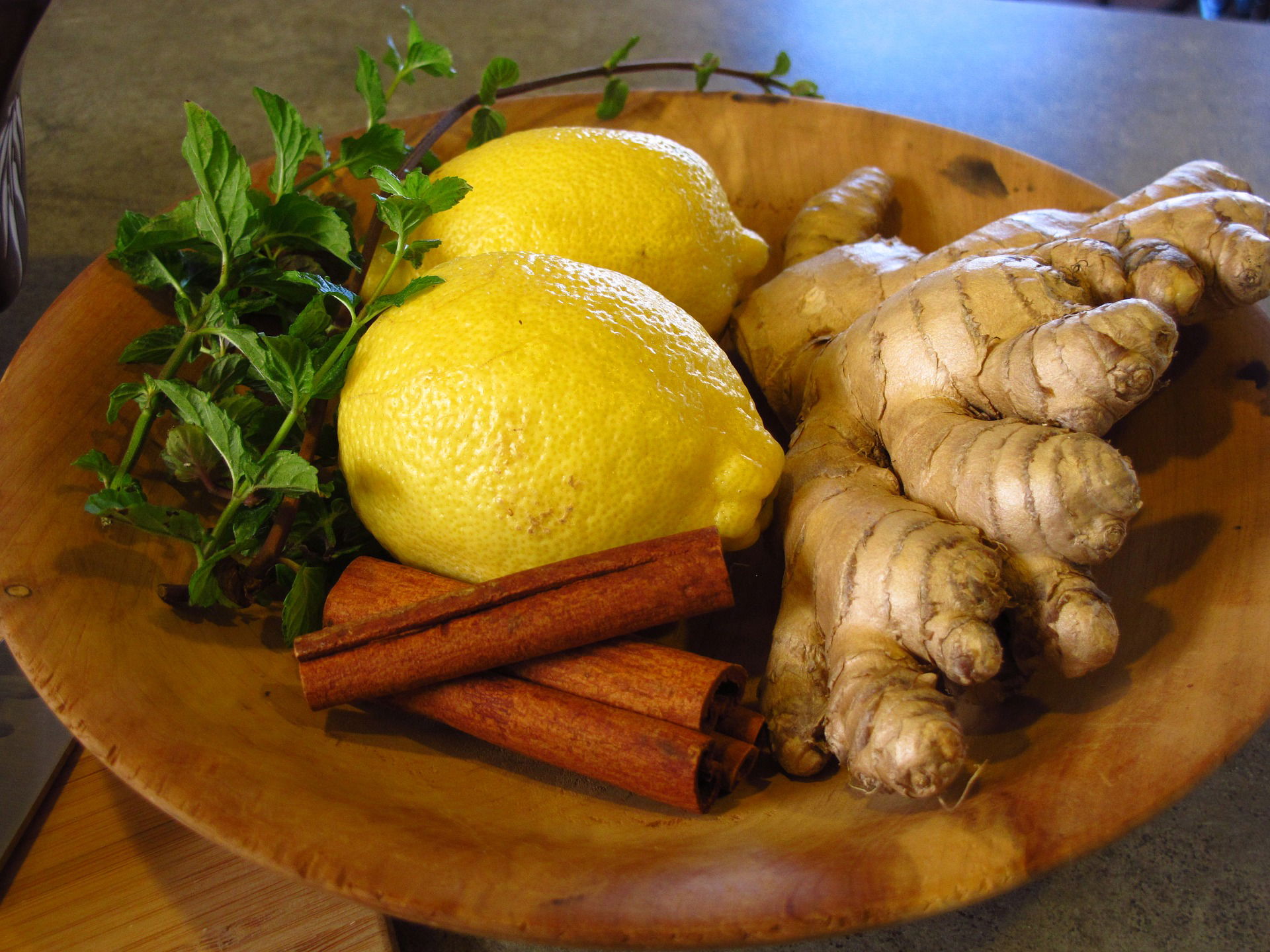Fresh ginger root is a knobby, beige-colored root that resembles a hand.
Fresh ginger root is a versatile and widely used ingredient in a variety of dishes and cuisines around the world. Its unique flavor and aroma make it a popular addition to sweet and savory recipes alike, and its numerous health benefits have made it a staple in many traditional medicinal practices. In this article, we will provide a detailed description of fresh ginger root, including its nutritional value, culinary uses, medicinal applications, and tips for selection and storage. Whether you are an experienced cook or simply looking to expand your culinary horizons, this guide will provide all the information you need to incorporate fresh ginger root into your meals and reap its many benefits.

Introduction to Fresh Ginger Root
If you love adding unique flavors to your dishes, then fresh ginger root can be your new best friend. Ginger is a rhizome that has been used in various dishes for thousands of years. Its unique taste and aroma add a zing to both sweet and savory dishes, making it one of the most popular spices worldwide. In this article, we'll delve into the history, nutritional value, health benefits, and culinary uses of fresh ginger root.
What is Fresh Ginger Root?
Fresh ginger root is a knobby, beige-colored root that resembles a hand. It's a plant from the Zingiberaceae family and is closely related to turmeric and cardamom. Its flesh can range from pale green to yellow and is covered with a thin layer of skin that can easily be peeled. Ginger has a warm, pungent, and slightly sweet flavor, making it a popular ingredient in both sweet and savory dishes.

History and Cultivation
Ginger originated in Southeast Asia and has been used in Ayurvedic medicine for over 5000 years. Its popularity as a spice and medicinal herb spread throughout the Indian subcontinent, then to the Middle East, Africa, and Europe. Eventually, it traveled to the New World through trade routes, and its cultivation spread throughout the Caribbean, South America, and Hawaii. Today, ginger is grown in various tropical and subtropical regions worldwide, with China being the largest producer of ginger.
Nutritional Value and Health Benefits of Fresh Ginger Root
Nutritional Content of Fresh Ginger Root
Fresh ginger root is low in calories and high in essential nutrients. One tablespoon of grated ginger (5 grams) contains only 4 calories, 0.1 grams of protein, 0.1 grams of fat, and 1 gram of carbohydrates. It's also an excellent source of vitamin C, magnesium, and potassium.
Health Benefits of Fresh Ginger Root
Ginger has been used in traditional medicine to treat various ailments, including nausea, inflammation, and digestive issues. Modern studies have also shown that ginger has potent anti-inflammatory and antioxidant properties, making it a potent natural remedy for various health conditions. It can help relieve nausea, reduce muscle pain and soreness, lower blood sugar levels, and improve heart health. However, more research is needed before making conclusive claims about ginger's health benefits.

Culinary Uses of Fresh Ginger Root
Uses in Different Cuisines
Ginger is a versatile spice used in various cuisines worldwide. In Indian cuisine, ginger is used in curries, chutneys, and masalas. In Japanese cuisine, pickled ginger is a popular condiment eaten with sushi. In Chinese cuisine, ginger is commonly used in stir-fries, soups, and marinades. And in Western cuisine, ginger is often used in baked goods, marinades, and sauces.
Common Dishes that Feature Fresh Ginger Root
Fresh ginger root is a staple ingredient in many dishes worldwide. Some of the most popular dishes that feature ginger include gingerbread, ginger snaps, ginger ale, ginger tea, ginger chicken, ginger beef, and ginger-sesame stir-fry.
How to Select and Store Fresh Ginger Root
Tips for Choosing Fresh Ginger Root
When selecting fresh ginger root, choose one that is firm, smooth, and heavy for its size. The skin should be thin and free from wrinkles, mold, or soft spots. It should also have a strong, fresh aroma.
Storage Techniques for Fresh Ginger Root
Fresh ginger root can be stored in several ways, depending on how quickly you plan to use it. If you plan to use it within a few days, store it in a paper bag with a few air holes and keep it in the vegetable crisper of your refrigerator. If you plan to keep it for an extended period, you can freeze it for up to six months. To freeze ginger, peel and grate it, then wrap it tightly in plastic or store it in an airtight container in the freezer.
Preparing and Cooking with Fresh Ginger Root
Fresh ginger root is a versatile ingredient that can be used in a variety of dishes, from curries to hot toddies. Before using ginger, it is important to prepare it properly. Here are some tips on peeling and slicing techniques, as well as cooking methods and recipes.
Peeling and Slicing Techniques
To peel the ginger root, use a vegetable peeler or the edge of a spoon. The skin is thin, so be gentle to avoid removing too much of the flesh. Once peeled, ginger can be sliced, grated, or minced. For slicing, use a sharp knife and cut against the grain to achieve thin, even pieces.
Cooking Methods and Recipes
Ginger can be used fresh, dried, or ground in a variety of dishes. It pairs well with meat, vegetables, and grains. One popular use is in stir-fries, where thinly sliced ginger is added to the pan with garlic and other aromatics. Ginger can also be used to make tea, syrups, and sauces. Try adding grated ginger to hot water with honey and lemon for a soothing drink, or mix with soy sauce and vinegar for a dipping sauce.

Medicinal Uses of Fresh Ginger Root
Fresh ginger root has been used for medicinal purposes for centuries. It is believed to have anti-inflammatory, antiviral, and antioxidant properties, and can help with digestion and nausea.
Traditional Medicinal Uses
In traditional Chinese and Ayurvedic medicine, ginger is used to treat a variety of ailments, including headaches, joint pain, and menstrual cramps. In Western medicine, ginger is often used to relieve nausea and vomiting.
Modern Medicinal Applications
Recent studies have found that ginger may also have anti-cancer properties and could help lower cholesterol and blood sugar levels. Ginger supplements are available in pill form, but it is important to talk to a doctor before taking any new supplements.
Varieties of Fresh Ginger Root
While ginger is typically thought of as a single ingredient, there are actually many different varieties. Some of the most common is Hawaiian, Chinese, and Indian ginger. They differ in flavor, heat, and texture.
Common Varieties and Their Characteristics
Hawaiian ginger is known for its mild flavor and creamy texture. Chinese ginger is often spicier, with a sharper taste. Indian ginger is typically the hottest, with a pungent, almost citrus-like flavor.
Conclusion and Final Thoughts on Fresh Ginger Root
Fresh ginger root is a delicious and versatile ingredient that can be used in many different ways. It has a long history of medicinal use and may have a variety of health benefits. When selecting ginger, consider the variety and its intended use. With some practice, you'll be chopping, grating, and cooking with fresh ginger like a pro!
In conclusion, fresh ginger root is a versatile and beneficial ingredient that can add flavor and health benefits to a wide range of dishes. Whether you are using it to add a spicy kick to a stir-fry or to soothe an upset stomach, this root has a range of uses that make it a valuable addition to any pantry. By following the tips and guidelines outlined in this article, you can make the most of your fresh ginger root and enjoy all the flavor and health benefits it has to offer.

FAQ
How long can the fresh ginger root be stored?
Fresh ginger root can be stored for up to three weeks in the refrigerator, provided it is stored properly in a plastic bag or wrapped in paper towels to absorb excess moisture. It can also be frozen for up to six months, either whole or grated, for longer storage.
Can fresh ginger root be substituted for ground ginger?
Yes, fresh ginger root can be substituted for ground ginger in most recipes, although the flavor will be slightly different. As a general rule, one tablespoon of grated fresh ginger root can be substituted for 1/8 teaspoon of ground ginger.
Can fresh ginger root be used in sweet dishes?
Yes, fresh ginger root can be used in sweet dishes to add a subtle, spicy flavor. It pairs particularly well with citrus and tropical fruits and can be used in desserts like cookies, cakes, and puddings.
What are the health benefits of fresh ginger root?
Fresh ginger root has a range of health benefits, including anti-inflammatory and anti-nausea properties, as well as potential benefits for heart health and digestion. It may also have anti-cancer properties and be beneficial for brain function. However, more research is needed to fully understand the potential health benefits of fresh ginger root.